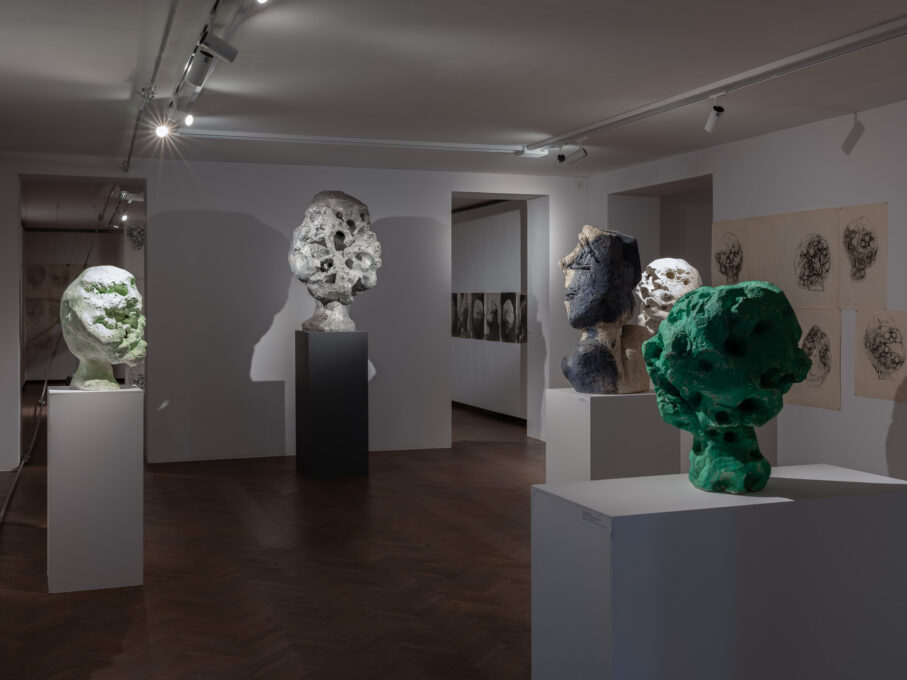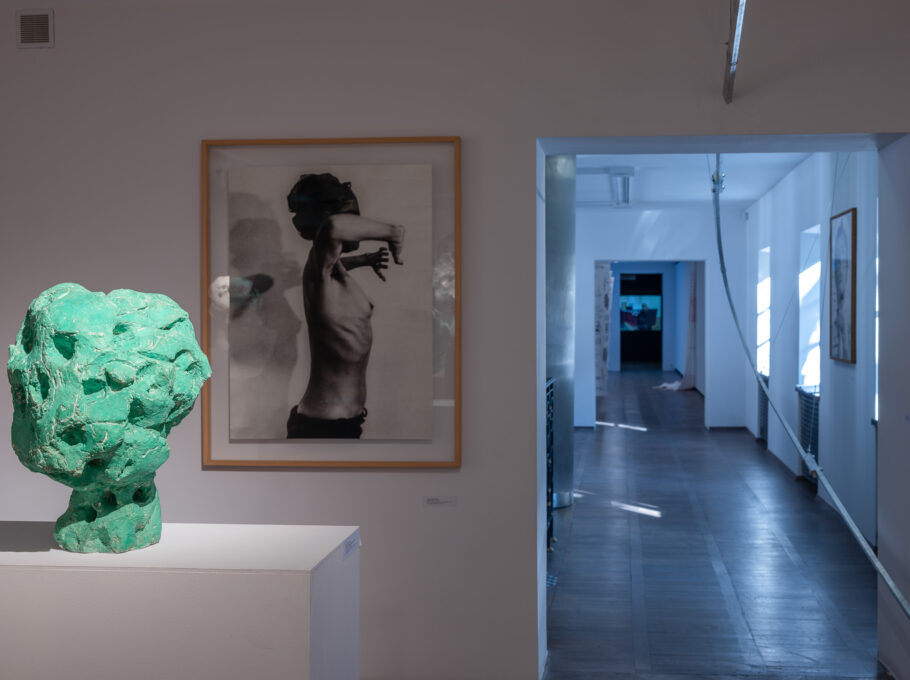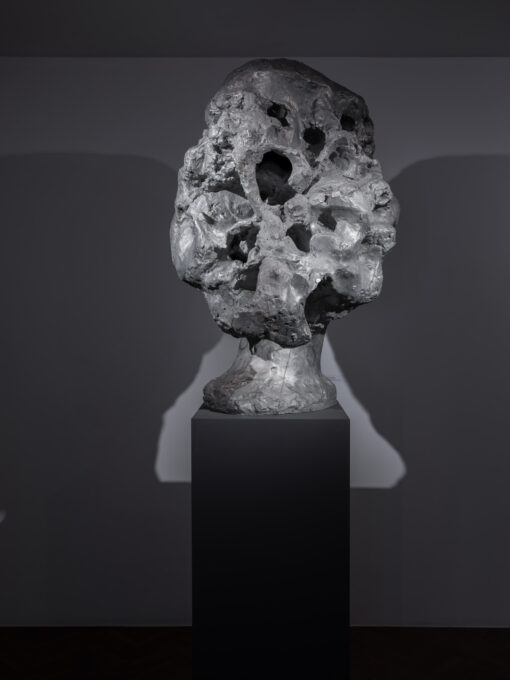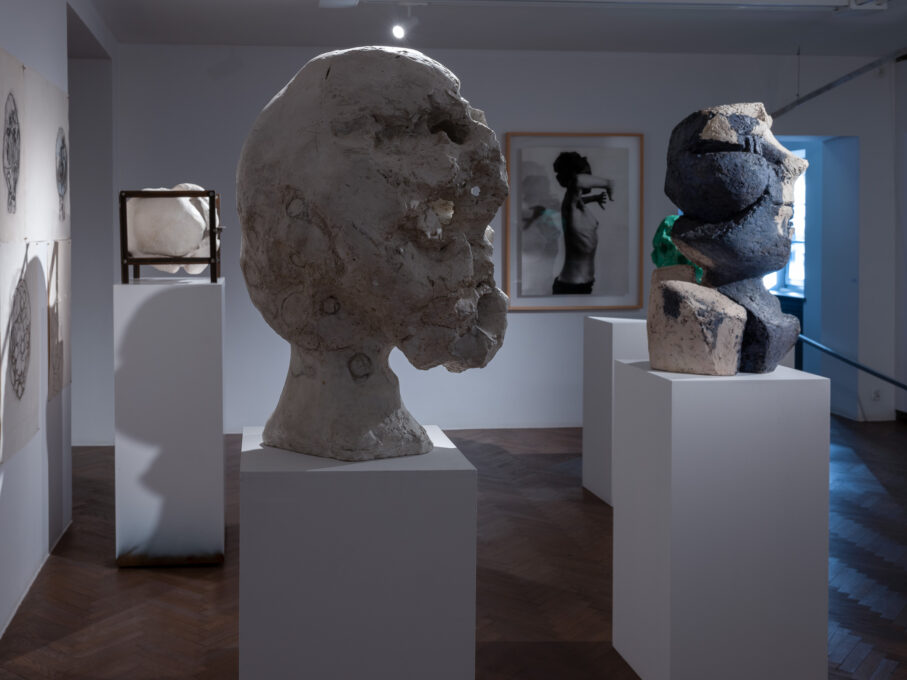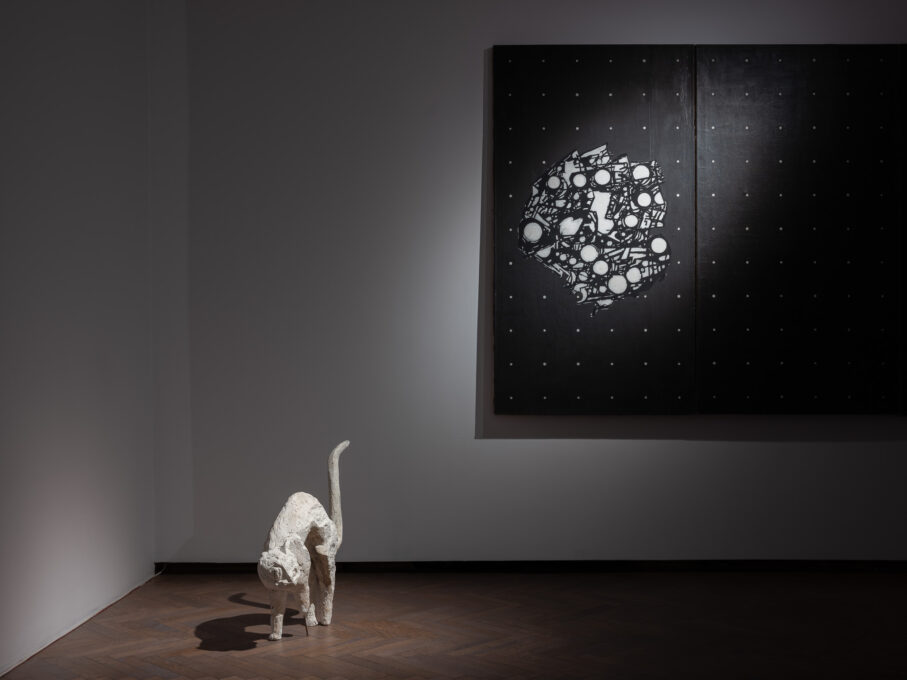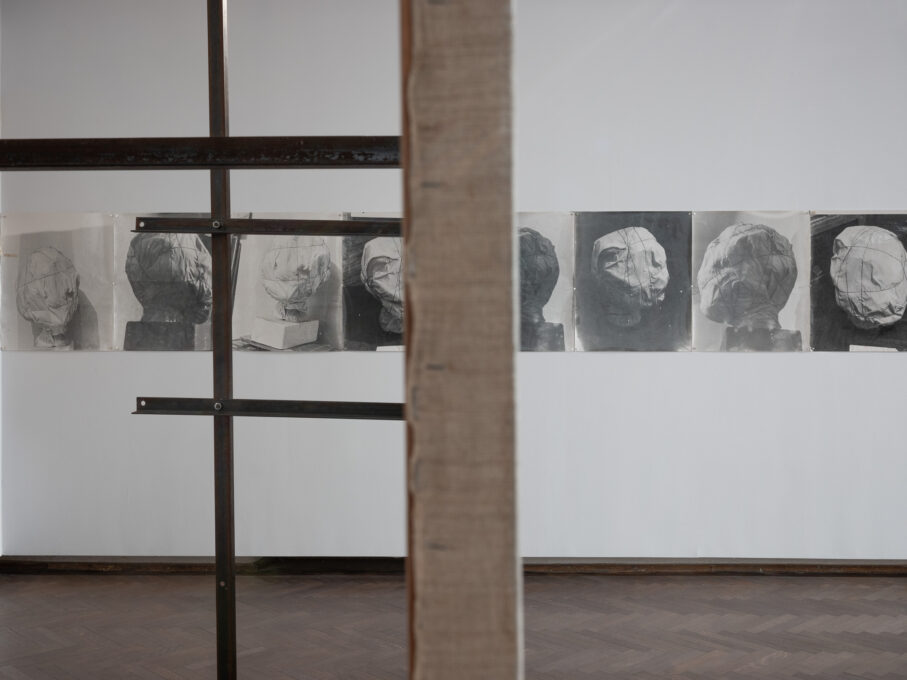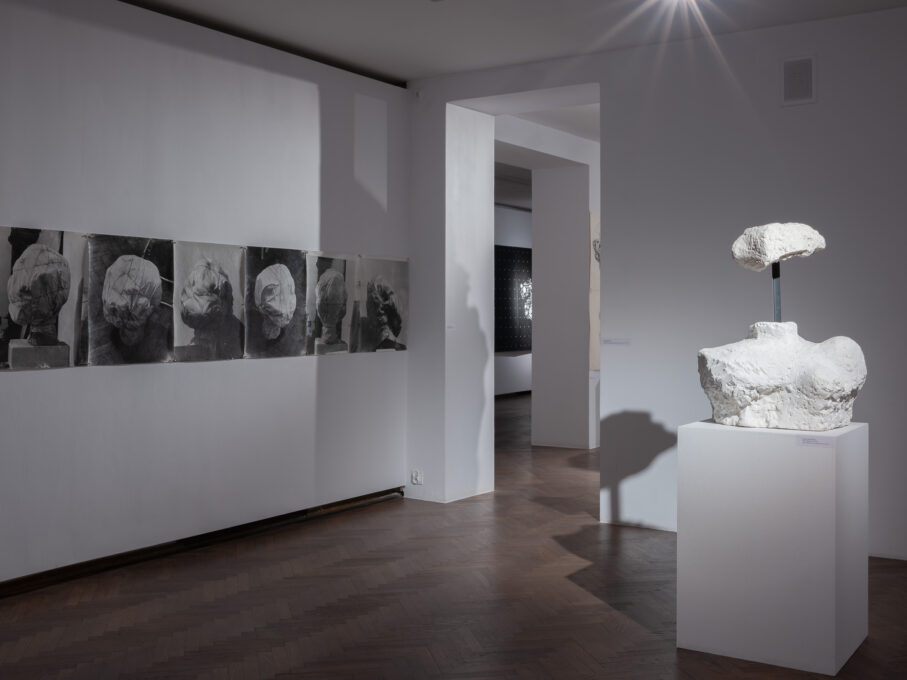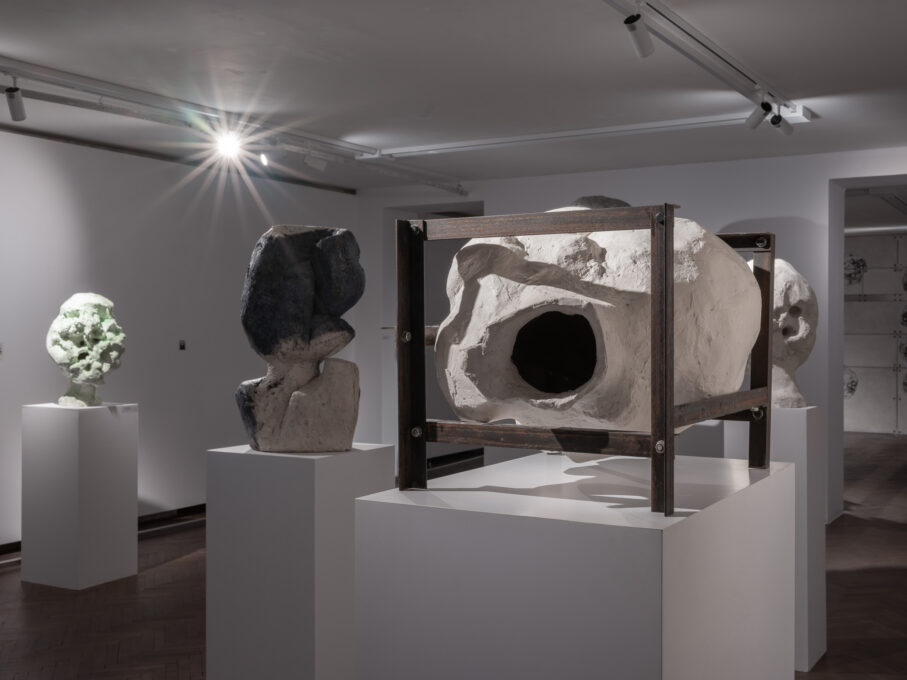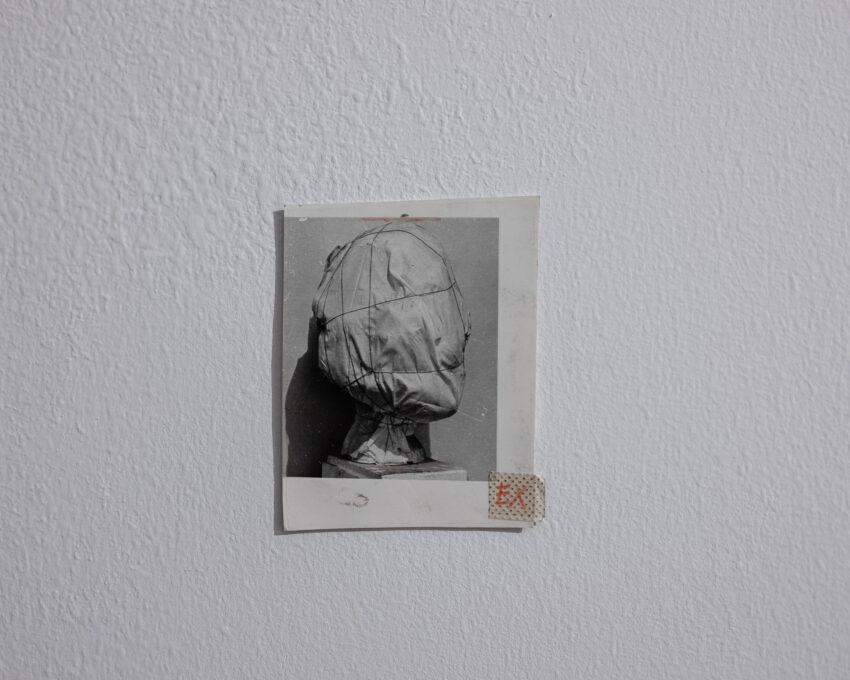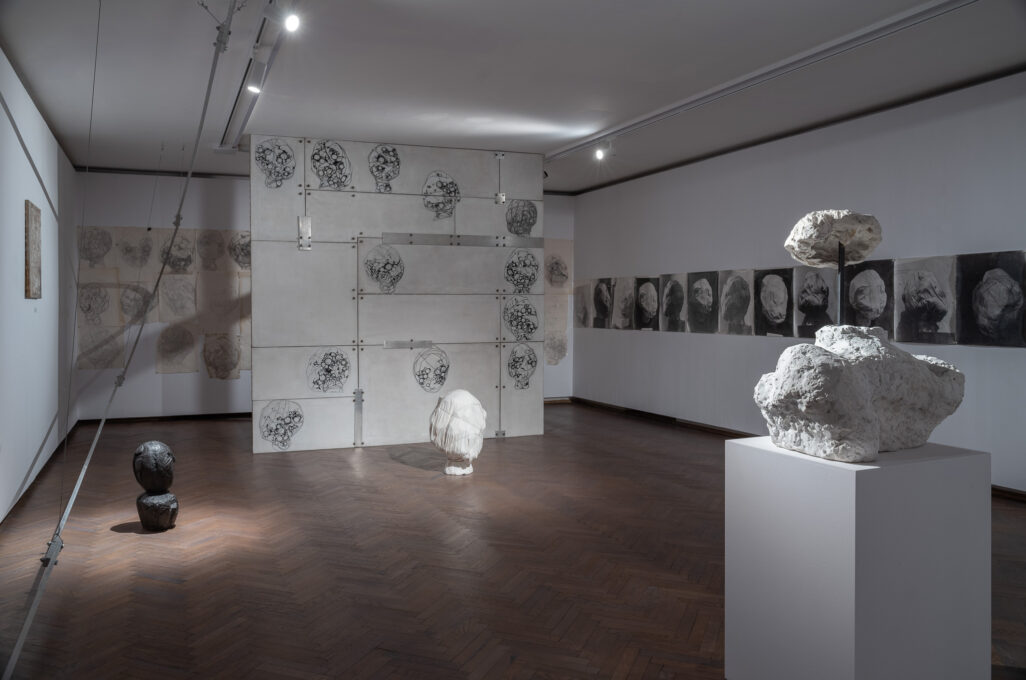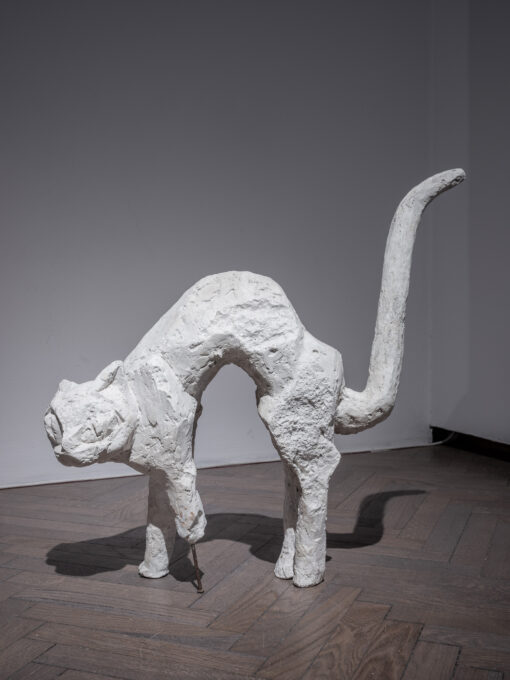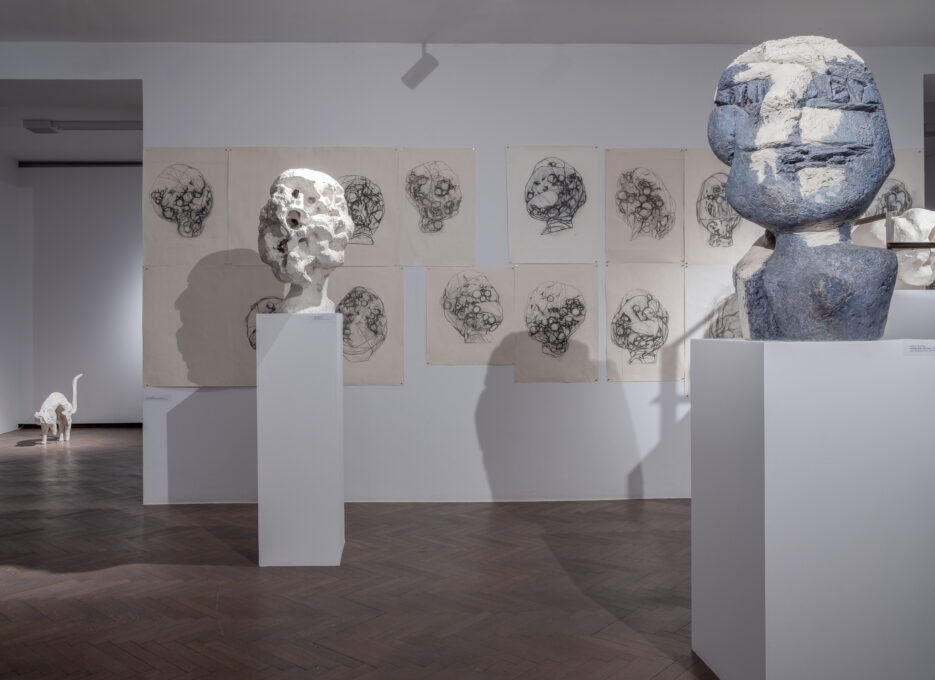Wanda Czełkowska Sculpture is an Intellectual Event
Wanda Czełkowska
Sculpture is an Intellectual Event
31.01-30.03.2025
Arsenal Gallery in Białystok
Mickiewicza 2, Białystok
Curator: Michał Łukaszuk
The title of the exhibition, taken from the artist’s notes, might be perceived as a provocation. How can something as tangible and material as a sculpture be equated with something as fleeting and ephemeral as an event—and an intellectual one, no less? Czełkowska’s artistic practice challenges the conventional roles of the sculptural medium, pushing it to such radical extremes that it even contemplates the disappearance of the object itself (is it possible to capture disappearance in sculpture?). Beyond the physical and material aspects of sculpture, Czełkowska delves into its performative potential—exploring not only how it functions but, as suggested in the title, how it manifests as an event. Through her thought-provoking questions and her uncompromisingly radical creative approach, Czełkowska ventures into the realm of unorthodox and ambiguous answers.
The artist’s exploration also extends to acts of violence—her sculpted heads are deformed, tightly concealed, bound with ropes, split apart, or subjected to attack. In a bold and unrelenting manner, Czełkowska interrogates the ways violence is mediated, pioneering critical questions about its representation and the emotional impacts of witnessing it. In an era dominated by the compulsive proliferation of media imagery depicting acts of violence, the questions raised by Czełkowska’s work feel disturbingly immediate and relevant.
The exhibition at Arsenal Gallery in Białystok seeks to encapsulate the ephemeral, event-like, and intellectually charged atmosphere surrounding Wanda Czełkowska’s sculptures.
Wanda Czełkowska (1930–2021) was born in Brest-on-the-Bug, raised in Vilnius, and moved with her family to Białystok in 1945, where she began high school. In her final year, already in Olsztyn, she met Xawery Dunikowski. This encounter influenced her decision to pursue studies at an art academy. From 1949 to 1954, she studied at the Academy of Fine Arts in Kraków, specializing in sculpture under Professor Jerzy Bandura. In 1955, she sculpted Cat. In 1962, as part of the Planty park sculpture exhibition in Kraków, she presented Players, which won first prize in a competition for a park sculpture for the city.
Czełkowska’s career gained momentum in 1963. That year, she held a solo exhibition at Galeria Krzysztofory in Kraków, accompanied by a catalog and an essay by Piotr Krakowski. The magazine Ty i Ja published photographs of several of her sculptures, and she traveled to France to participate in the 3rd International Biennale de Paris ‘63, exhibiting alongside artists such as Antonio Seguí, Christo, Niki de Saint Phalle, Pierre Boulez, Iannis Xenakis, Peter Blake, David Hockney, Wassily Kandinsky, and Salvador Dalí. In Paris, she was welcomed by Alina Szapocznikow and Roman Cieślewicz, who had been living there for several months. From Paris, she traveled to Rome on a cultural scholarship. In 1968, her solo exhibition Wanda Czełkowska. Drawing, Sculpture was presented as part of the 2nd February Salon in Zakopane. In April of the same year, she received an invitation from Tadeusz Kantor to join II Grupa Krakowska (Second Kraków Group) and to participate in a drawing exhibition at Galeria Krzysztofory. Around this time, she became involved with the artistic community of Piwnica pod Baranami and developed a friendship with the singer Wanda Warska. She participated in the 9th Kraków Group exhibition – Kraków Group Drawing Exhibition (Galeria Krzysztofory, 1968) and remained an active member of the group’s regular exhibitions from 1969 to 1981.
In 1971, she created the Monument to the Collective Graves of Soldiers Fallen between 1939 and 1945 in Miechów. On December 18 of the same year, as part of the 4th Kraków Encounters, she presented for the first time her large-scale, eight-meter-long installation Table, with the motif of an eighteenfold multiplied head like form. The piece was met with an enthusiastic reception from both audiences and critics. In 1972, she participated in the Edinburgh Festival, where she created an in situ work in front of the Scottish National Gallery of Modern Art titled Conceptual Information about “The Table”, incorporating 18 casts of the Edinburgh Head. Alongside an international group of artists, led by Richard Demarco, she toured Scotland. During this time, she was invited to stay in Edinburgh and prepare a solo exhibition in 1973, an invitation extended to her as the only Polish artist, alongside Tadeusz Kantor.
In 1973, at the Exhibition of the Laureates of Art Criticism at the ZPAP Pryzmat Gallery in Kraków, she presented her concept Absolute Elimination of Sculpture as a Notion of Shape for the first time, alongside her 1973 sculpture Green Head. Between 1975 and 1976, she created Wall.
From the early 1980s, Czełkowska became involved with the independent artistic community, which gathered in private homes during the martial law period. In 1990, Galeria Zderzak in Kraków opened two simultaneous solo exhibitions of her work, accompanied by the catalog Wanda Czełkowska. Elegy. A Recollection After Many Years. In 1995, she realized Absolute Elimination of Sculpture as a Notion of Shape on a 1:1 scale as part of the exhibition Polish Sculpture of the 1970s and 1980s at the Polish Sculpture Center in Orońsko.
In 2004, she moved to Warsaw. In 2016, Królikarnia – Xawery Dunikowski Museum of Sculpture organized a major retrospective exhibition, Wanda Czełkowska. Retrospection (curated by Ewa Opałka, with spatial arrangement co-created by Agnieszka Tarasiuk). In 2018, she created a new spatial form: the large-scale Ellipse, constructed from metal strips bolted together. In 2020, Czełkowska participated in the group exhibition Theft and Destruction at the Arsenal Gallery in Białystok (curated by Michał Łukaszuk). On June 17, 2021, she passed away in her apartment in Warsaw’s Mokotów district.
Translated by Anna Bergiel

PLAN YOUR VISIT
Opening times:
Thuesday – Sunday
10:00-18:00
Last admission
to exhibition is at:
17.30
